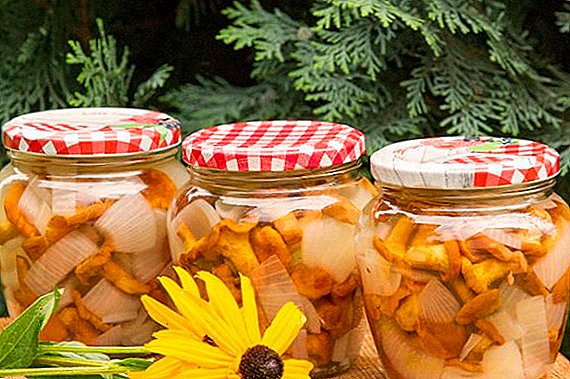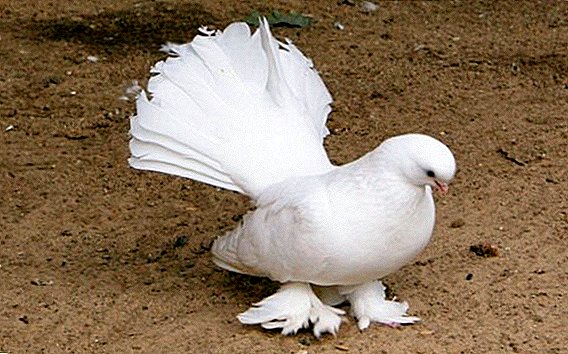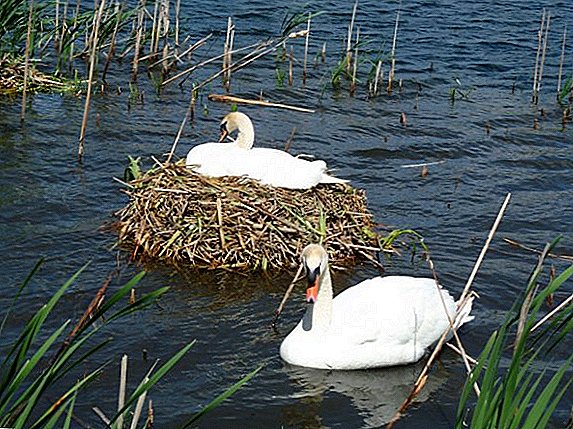 One of the most striking and fascinating birds is swans. They rightly bear the title of kings among birds, because even eagles can envy their grace and elegance. These beautiful waterfowl are of great interest not only for ornithologists, but also for ordinary people, because everyone likes to contemplate their imposing and smooth movements along the picturesque lakes. In our article, we will consider the main stages of the life cycle of swans, starting with the mating season and building a nest and ending with laying, hatching eggs and further care of the offspring. So, let's understand.
One of the most striking and fascinating birds is swans. They rightly bear the title of kings among birds, because even eagles can envy their grace and elegance. These beautiful waterfowl are of great interest not only for ornithologists, but also for ordinary people, because everyone likes to contemplate their imposing and smooth movements along the picturesque lakes. In our article, we will consider the main stages of the life cycle of swans, starting with the mating season and building a nest and ending with laying, hatching eggs and further care of the offspring. So, let's understand.
Mating season
Swans are unique and unique birds that also know how to be faithful. So, they choose a couple for themselves only once in their entire life and after that they never change their partner.
Take a closer look at the most popular breeds of swans, as well as some of them: the mute swan and the black swan.
By itself, the mating season of these birds begins literally the next week after arrival from the warm edges, that is, at the end of March or the beginning of April, when the temperature is still cold enough.  Swans are rather slow birds in their puberty. So, birds of this category acquire the ability to breed only for 4 years from the moment of birth.
Swans are rather slow birds in their puberty. So, birds of this category acquire the ability to breed only for 4 years from the moment of birth.
Selection of a pair occurs within a week after arrival. At this time, the swans arrange a real waltz on the water, dancing and flying from place to place. In such a graceful dance, and relationships are tied between females and males.
Did you know? Swans are amazing with many abilities and habits. Among them we can distinguish their speed in flight at 60-80 km / h, which is very fast for birds. Thanks to the powerful muscles, swans are able to fly thousands of kilometers without a break, while climbing a fantastic height of 8,000 meters.
After the dance, they begin their marriage games. During this period, males and females are selected on land, where the swan is important and proudly nurses back and forth in front of the winch, stretching its neck, periodically flapping its wide wings, reproducing screaming sounds.
After some time, the female flies to a new place, as if checking the seriousness of her cavalier’s intentions. The male flies after him and repeats his ritual of proud strides.  Then, when the birds have already decided that they will become a couple for life, the female begins to build a nest.
Then, when the birds have already decided that they will become a couple for life, the female begins to build a nest.
When and where do swans build their nests
Construction of the nest begins immediately after the mating games. The male chooses a dry place on a hill, but at the same time close to the reservoir. The best option for placing the nest is a lake lump or a small hill on the coast. Also, the swan couple can make a nest on the stones, if their location is convenient for the birds.
Did you know? The nests of swans are built from reeds, branches and grass. As a result, the size of the nest is just amazing, because its diameter is more than 3 meters, and the height is almost 1 meter.
How swans build a nest
After the male chooses the place of the future nest, he proceeds to the collection of building material. For this, he can fly many kilometers in search of the very branch that he thinks would be suitable for a nest. The female diligently and neatly lays the twig after the twig into its proper place, gradually erecting the cupped shape of the swan house. 
Masonry
On average, a swan family is capable of laying 4 to 8 eggs in one season. Unfortunately, it often happens that the swans leave their nest. Such a spontaneous decision can be caused by many reasons, including the death of one of the parents.
Important! From the very moment of choosing a place for the nest and right up to the very warm edges, the swans are desperately and ominously defending their habitat. They attack anyone who encroaches on their territory. You should not be touched by their "loyal" methods of struggle, such as waving wings and shrill cries. With one blow of the wing, the swan is able to break the arm of a teenager. Needless to say, if the mighty beak of a swan is put into battle.
But in most cases, the female successfully endures the period of hatching of eggs and after a certain period of time beautiful swans are born. The eggs themselves have a characteristic green-gray color, less often light brown. The shell is distinguished by a certain surface roughness. In size, such an egg exceeds 10 centimeters in length and 6 centimeters in diameter. 
Hatching eggs
Hatching delayed laying lasts from 33 to 40 days. Throughout this time, the faithful male guards his swan and, if necessary, warns of a possible danger. If the birds were disturbed, then they quickly fall asleep laying and laying branches to hide it from a predator.
Poultry farmers should consider all the features of breeding swans at home.
The parents themselves break down from their homestead and hover over the nest, waiting for the stranger to attack or the alarm was false. Carefully and carefully examining the surrounding clutch territory, the male and female can return to the nest.
Care for offspring
After 33–40 days, the nestlings born to the world add significant care to their parents. Kids appear covered with ash-gray down. And only after the molt the color corresponding to their breed is taken: white or black. 
Throughout the following year, the father and mother of the swan brood always remain with their children, helping them in every way and teaching them all the intricacies of this life. The little gray swans are looking for food for themselves, but under the close supervision of their parents. Kids make feeding in shallow water, because there it is safe for them.
You will certainly be useful to learn how to build a pond on the site with your own hands.
One of the tasks of the mother is to protect their chicks from freezing, because their downy cover is not enough to protect against cold nights. Because the swans are settled under the wing of the mother, where they sleep all night. Another way to express maternal love is to ride on your back. Little swans climb back to the mother and she rolls them around the pond.
Swans can fly only for 3-4 months after birth. The food of these haughty birds consists mainly of plant products. Mandatory for the daily diet of young individuals are all kinds of insects and some species of mollusks.  This feature is due to the fact that the growing body of swans requires vitamin and mineral compounds of animal origin, and especially animal protein, which is extremely important for normal growth and development.
This feature is due to the fact that the growing body of swans requires vitamin and mineral compounds of animal origin, and especially animal protein, which is extremely important for normal growth and development.
These birds skillfully collect food both on the surface of water bodies and in its depths. In order to dive under the water surface, the swans lower their long necks and sink the front of the hull. In this case, the paws and tail remain above the water, like a float.
Important! All types of swans are listed in the Red Book and are considered endangered. These noble birds need human help and protection, because the number of swans in the world does not exceed half a million.
Often in the daily life of swans is a sortie on land. And although they walk quite hard, rolling over from side to side, like geese, but this does not prevent them from regaling on fresh green grass.
Swans are quite voracious birds, because adults can consume up to 4 kg of aquatic and terrestrial plants per day.  The life of swans is filled with many special actions that are almost ritual in nature. Even the usual action for birds, such as building a nest, they turn into real art, carefully laying out each twig and gently covering the bottom with feathers, so that their chicks are comfortable and warm.
The life of swans is filled with many special actions that are almost ritual in nature. Even the usual action for birds, such as building a nest, they turn into real art, carefully laying out each twig and gently covering the bottom with feathers, so that their chicks are comfortable and warm.
We recommend reading about how many swans live.
And about the parental instincts of this royal bird, you can add legends. Here they are, the kings of the bird kingdom, called swans. Many nations treat swans as sacred birds, heralds and soothsayers. Swan secrets fascinate, and interest in birds does not fade. The main thing is to preserve and transmit this amazing heritage of nature to descendants.












